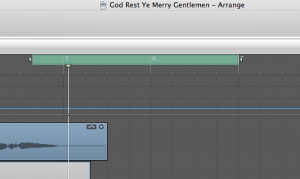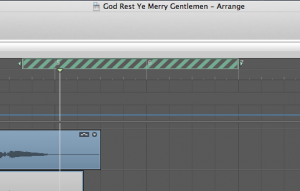Even if you’re keeping the same bit depth.
The short of it is, that the bounce down, say from 96khz/24bit to 44.1/24bit is going to raise your True Peak and integrated LUFS by .2-3 points. When you apply dithering, it tames that gain to only .1 point. There are technical reasons for this, but the short of it is, my last track I recorded in 96khz/24 bit in logic and for what ever reason when I googled about Dithering, the impression I got was that it was only necessary if you were reducing the bit depth, say from 24 to 16, which has been the common practice for years.
But lately Spotify, Apple Music, and I assume the others are streaming in 24-bit, so I didn’t feel the need to dither. But then I noticed that jump after bouncing. Dithering solved the problem, or at least most of it. There still was a .1 jump both in True Peak and iLUFS, but not the .2-.3 point jump that you get otherwise. There are three Dithering options in Logic Pro X bouncing: Regular, and two different “Noise Shaping” ones. I tried all three, but at least for my song, they sounded the same and gave me the exact same readings on all the parameters of my Youlean Meter. So I just went with regular, the first choice.
Here’s a comment I just wrote on a Youtube video by the brilliant “In the Mix” channel that I will link to at the end:
Looking at those guidelines, does it mean if you keep your TP below 2.0 Spotify will let you get away with a little louder LUFS? The most recent song I uploaded had a TP of -2.1 and an integrated LUFS of -13.4. Since I kept it below -2 TP do you think they’ll let the .6db “slide” so to speak (as we say here in the States,hehhe) or will they reduce it still? The guidelines are a little obscure. They say if you are going to master louder than -14LUFS then make sure your TP is below -2. So I wasn’t quite sure how to interpret that. For sure with indies like myself, the holy grail as it were is to have a sonic quality and loudness that competes with the majors. Oh another think I’ve learned: You’ve got to employ dithering, even if you keep the same bit depth on the bounce or mixdown. I accepted the Youlean measurements within the mix because they were the very last on the stereo buss chain. But the mix down from 96/24 to 44.1/24 even keeping wave lossless bumped up the TP and iLUFS by .2-.3 points. Employing dithering tamed those losses to only .1 And the readouts were exactly the same whether using regular dithering or the two “Noise Shaping” varieties. Cheers!
Stephen Pickering


